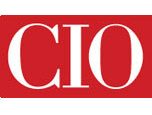Three Disruptions in Business Services
Whether your company is a service provider or a consumer of business services, you’ll see dramatic change in 2017. This is our 25th anniversary at Everest Group, and reviewing the past 25 years of the services industry got me thinking about where services are taking businesses for the next few years. I’ve seen substantial changes in 25 years, and we’re about to see change again – but in a bigger, more profound way.
I view the services industry through the lens of what a “service” is. It’s the exchange of value – value deemed significant enough that the buyer is willing to pay for that service.
Disruption #1
The first services disruption over the past 25 years was in the asset-intensive IT infrastructure space.
In 1991 when I founded Everest Group after I left EDS, the service provider landscape was dominated by ACS, Capgemini, CSC, EDS, and IBM. These infrastructure providers delivered value primarily as operational excellence. The key leverage point in the operational excellence model was economies of scale.
Our value proposition at Everest Group at that time was that we understood the operational excellence model – where to apply it, how to select a provider, how to define the services, how to negotiate an equitable contract and how to measure the results. I wrote a book, “Turning Lead Into Gold: The Demystification of Outsourcing,” published in 2000, which laid out this information.
Disruption #2
At that time, we at Everest Group were working with a client that was a large energy company, which moved its work to a service provider in India. We started to see the emergence of a radical new way of delivering services by moving U.S. and European work offshore. The key leverage point in this second services disruption was talent pools in lower-cost locations.
Then came Y2K, which catapulted India’s talent resources into prominence because the U.S. lacked necessary resources to remediate computer systems for the new century. This further validated using offshore resources and the labor arbitrage model.
Yes, the providers delivering operational excellence achieved impressive results in delivering value for their customers. But the labor arbitrage model delivered greater value. Then we saw companies taking advantage of business process outsourcing (BPO) services, leveraging low-cost talent. BPO and the labor arbitrage market exploded with growth.
New challenges arose. Mature buyers of BPO services needed to evolve their outsourcing strategies and realized a decreasing capability of internal purchasing organizations to buy and measure outsourcing services effectively. Service providers wanted to provide wider, deeper offerings. At Everest Group, we opened a new research group to provide more data and perspectives to assist mature buyers, and we reached out to providers to help them with their expansion growth agendas.
We worked with providers using the labor arbitrage model as they started experimenting with how to add more value as the labor arbitrage space matured over the past few years. Providers experimented with some early automation and analytics offerings that enabled customers to do work even better, faster and cheaper than before.
That brings us to today and the major disruption we’ll experience in 2017 and beyond.
Disruption #3
Now in 2016 it feels like a similar place to where we’ve been in the past – where we were with Y2K, on the cusp of explosive growth in delivering a disruptive model for business services. But today there is no external catapult like Y2K driving businesses to adopt a new model. Instead, there are disruptive digital technologies such as automation, analytics, cloud and cognitive computing.
Services based on digital technologies will deliver value even more powerful than the labor arbitrage model. How much value? Ultimately it will depend on changes in business and service models accompanying the digital technologies.
Viewing this new disruption again through the lens of value, here is my assessment for both sides of the services market – customers and providers. The services market will change even more dramatically in the coming years than what we saw in the two disruptive models over the past 25 years. We’ll see a lot of companies redefining value and changing models to deliver powerful new value. There will be a lot of service providers and customers going back to the drawing board, getting creative with opening new opportunities for greater value. Get ready for profound change!


